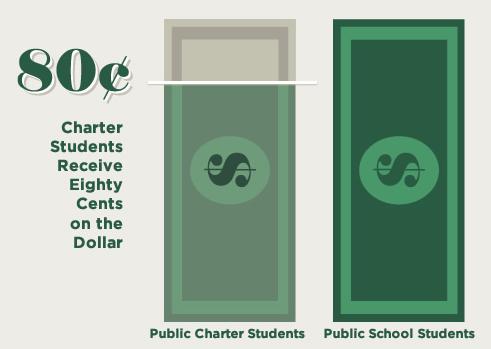Colorado is known nationwide as a pioneering state. There’s no better example of this spirit than our focus on providing high-quality school options to all kids.
Did you know we were the second state in the country to allow public charter schools, which have been serving Colorado students since 1993? Since then, public charter schools have become a critical part of the fabric of Colorado’s education system, serving more than 100,000 students and posting some of the strongest results in student achievement.
Despite charter schools’ growth and success in Colorado, there continues to be an abundance of misinformation surrounding the schools and the students they serve. This is further amplified by partisanship at the federal level and local attacks by status quo defenders. So, we want to set the record straight on Colorado charter schools and make sure you know the myths from the facts.
Myth: Charter schools are private schools.
Fact: Charter schools are tuition-free public schools, period. They do not require admissions tests or any financial contributions and all students are welcomed to attend. Since Colorado is an open enrollment state, students can choose to attend their neighborhood school or “choice in” to another school inside their district or even outside their district.
Myth: Charter schools don’t serve diverse student populations.
Fact: The diversity of Colorado public charter schools mirrors the diversity of our state. Charter schools serve a broad range of students including low-income students, students of color, and students with disabilities. In the 2015-16 school year, 46.9 percent of Colorado charter school students were minorities, whereas 45.7 percent of Colorado traditional public school students were minorities.
Myth: Charter schools don’t serve many students statewide.
Fact: Combining all students, charter schools would be the largest school district in the state. There are currently 238 charter schools in Colorado serving nearly 115,000 students. This is 12.7 percent of total public school enrollment in Colorado.
Myth: Charter schools use discriminatory enrollment practices.
Fact: There are no test-in requirements to attend Colorado charter schools. They are open to all students interested in attending them. In fact, many charter schools seek to enroll traditionally underserved students, such as Denver’s Rocky Mountain Prep and Denver School of Science and Technology (DSST). High-performing charter schools have waiting lists for students seeking seats and conduct lotteries each school year for open seats.
Myth: Charter schools aren’t held accountable for student performance.
Fact: Charter schools are accountable to the State Board and State Department of Education, in addition to the school district and families they serve. Charter schools are approved, or “authorized” by either the local school district or the state’s authorizing agency, the Colorado Charter School Institute. If the school fails to serve students well and achieve certain levels of performance, its charter can be revoked and the school will be closed.
Some of the highest performing schools in Colorado are public charter schools. In 2015, students in charter schools were more likely to score proficient or advanced in math, reading, and writing on the state assessment than their peers in traditional public schools. Further, our 2016 report Positive Outliers – Scaling Colorado’s Most Successful Schools found that, of Colorado’s 17 high-performing schools with a majority of low-income students, 12 are public charter schools.
One final fact: Roughly 43,000 Colorado public charter school students receive, on average, 20 percent less funding than their peers in traditional schools. That’s just 80 cents on the dollar simply because of the type of school they attend. No child is worth less than another.

